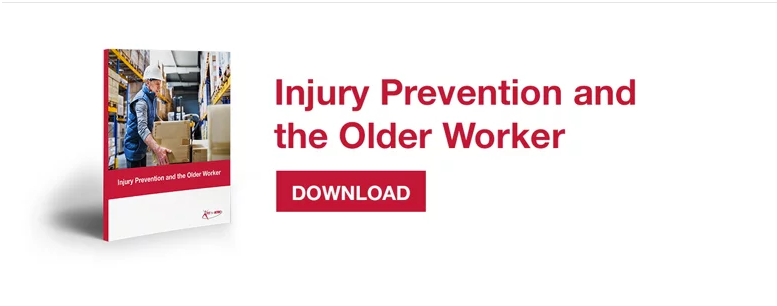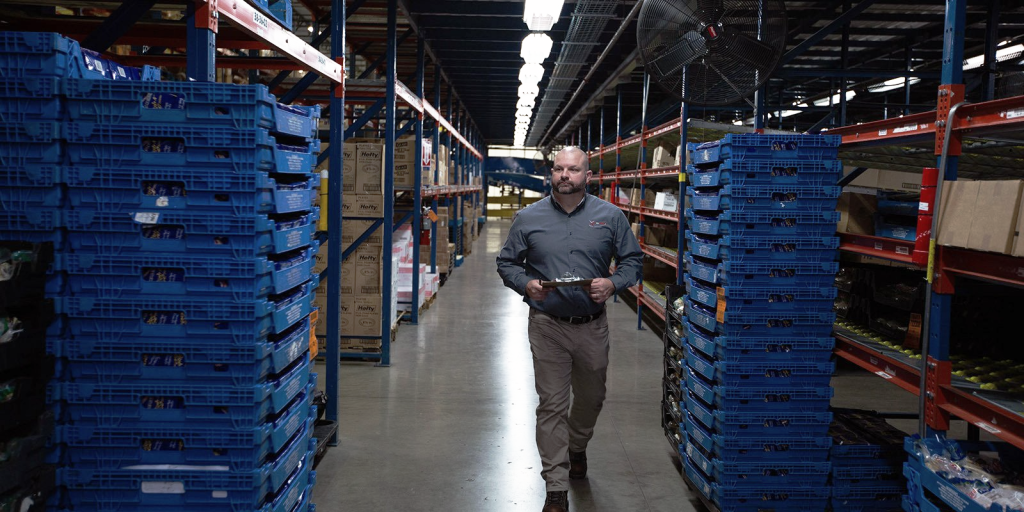It’s no secret the workforce is aging at a rapid pace. In fact, according to the Bureau of Labor statistics, 1 in 4 of the 164 million labor force will be 55 and older by 2024. There are many reasons for this changing demographic including lower birth rates and the financial and emotional need for workers to stay in the workforce well past traditional retirement age. We are not here to solve the global issue but rather offer some proactive measures to assist employers in keeping their workforce safe and productive. Naysayers use metaphors such as “The Silver Tsunami” or the “Gray Wave” to describe this trend. But forward-thinking employers are able to see the “Silver Lining”—looking for ways to turn their aging workforce into a competitive advantage. Older workers bring a wealth of benefits to the workplace: An ethic of personal responsibility, a can-do attitude, and of course years of experience and knowledge they can use to mentor their younger peers. For employers, this promises dividends in morale, worker loyalty, and reduced training costs. But if they don’t take proactive measures to ensure the safety and productivity of the older worker, the result can be detrimental to the bottom line and catastrophic to an injured worker. The 55+ crowd tends to have fewer workplace injuries. But when they do occur, they are more expensive and involve longer recovery times. Even a relatively minor injury can be complicated by pre-existing and comorbid conditions such as obesity, diabetes, arthritis, and degenerative disc disease—resulting in expensive claims. The chances of a successful return to work diminish with age—disrupting an employer’s productivity and resulting in expensive workers’ compensation claims. Most executives are aware of the shifting demographics, but few companies have taken any action to prepare for it. Too often, ergonomic and early intervention solutions are implemented only after injury-related expenses have ballooned. So, employers have a choice; be passive and reactive or proactive in preventing workplace injuries. Successfully managing an aging workforce can maximize their contributions to productivity while accommodating for their weaknesses. Adjusting the work environment to fit the capabilities of older workers is only one piece of the overall proactive strategy. Nothing moves the injury reduction needle as quickly, predictably, or to the magnitude as Early Intervention. By focusing on the 3 leading indicators to an injury (Early Soreness, Ergonomics and Behaviors) our onsite providers at Fit For Work are 100% focused on preventing injuries before an employee even complains of a symptom. This disrupts the typical pathway of injury response and avoids the healthcare system altogether. Our 20+ years of experience has shown us that all of our clients achieve at least a 50% reduction in injuries and associated costs when utilizing Fit For Work’s injury prevention services. Our experience shows that older workers tend to interact more readily with onsite injury prevention programs. After all, they are the ones with the most skin in the game. They want to stay injury free, continue to work, and eventually enjoy their well-earned retirement. For more on how to successfully manage an aging workforce and best practices regarding retention of your valued employees, contact us here. 
The Aging Workforce: A Silver Lining For Employers





